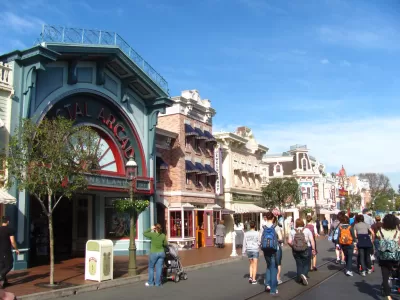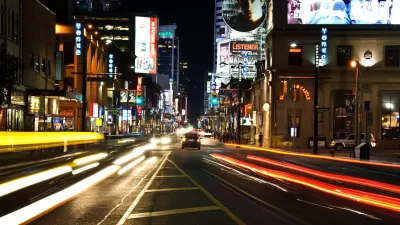A new breed of preservation has sprung up in Toronto, where existing structures are partially preserved to give new building's old facades. But is this attempt to preserve the existing streetscape actually succeeding?

Writing in TreeHugger, Lloyd Alter looks at a new trend in Toronto which has seen the city try to preserve the authenticity of it's streetscape through artificial means. The term "urban taxidermy," used by landscape architect, planner, and architect Robert Allsopp in an article for Toronto's NOW magazine, is used to describe current development requirements in Toronto's Yonge Street Heritage Conservation District that sees "the front 30 feet of existing old buildings are preserved (so it is much more than just facadism) and new condos are built behind and above, in an attempt to preserve the streetscape."
Urban taxidermy seems to be the most popular current compromise between complete heritage preservation and massive, wholesale redevelopment. Instead of facades, we are keeping large pieces of a building's fabric, but what remains gives only the illusion of a vital, fully functioning, street-related structure. What once sustained street life is being replaced by inert material.
...
Is it worth keeping these buildings? Yes, of course, but do we have to kill, stuff and mount them for them to survive? They are more than historical artifacts, bricks-and-mortar facades with finely detailed sills and cornices. They are part of an economic, social and cultural ecology that cannot be disassembled.
As Alter notes, the preservation of the building frontages does little to activate the streets in the short term. The authenticity of the building's place in the neighborhood eco-system is degraded, creating what Robert Allsopp describes as a streetscape diorama which requires a "suspension of disbelief."
FULL STORY: Jargon Watch: Urban Taxidermy

Planetizen Federal Action Tracker
A weekly monitor of how Trump’s orders and actions are impacting planners and planning in America.

Congressman Proposes Bill to Rename DC Metro “Trump Train”
The Make Autorail Great Again Act would withhold federal funding to the system until the Washington Metropolitan Area Transit Authority (WMATA), rebrands as the Washington Metropolitan Authority for Greater Access (WMAGA).

DARTSpace Platform Streamlines Dallas TOD Application Process
The Dallas transit agency hopes a shorter permitting timeline will boost transit-oriented development around rail stations.

Renters Now Outnumber Homeowners in Over 200 US Suburbs
High housing costs in city centers and the new-found flexibility offered by remote work are pushing more renters to suburban areas.

The Tiny, Adorable $7,000 Car Turning Japan Onto EVs
The single seat Mibot charges from a regular plug as quickly as an iPad, and is about half the price of an average EV.

Supreme Court Ruling in Pipeline Case Guts Federal Environmental Law
The decision limits the scope of a federal law that mandates extensive environmental impact reviews of energy, infrastructure, and transportation projects.
Urban Design for Planners 1: Software Tools
This six-course series explores essential urban design concepts using open source software and equips planners with the tools they need to participate fully in the urban design process.
Planning for Universal Design
Learn the tools for implementing Universal Design in planning regulations.
Municipality of Princeton
Roanoke Valley-Alleghany Regional Commission
City of Mt Shasta
City of Camden Redevelopment Agency
City of Astoria
Transportation Research & Education Center (TREC) at Portland State University
US High Speed Rail Association
City of Camden Redevelopment Agency
Municipality of Princeton (NJ)



























